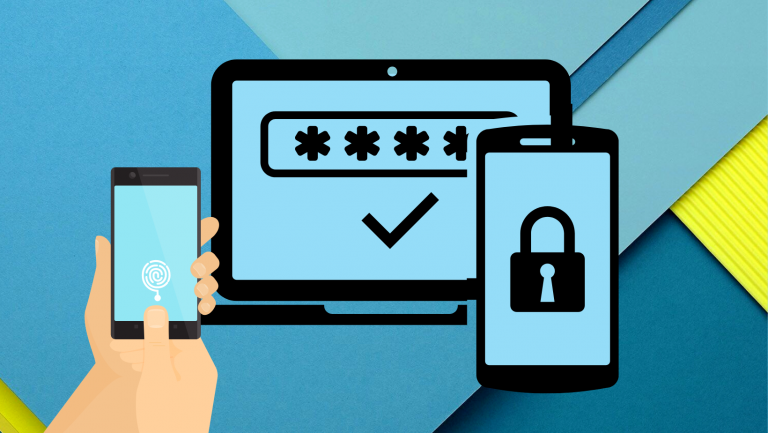Rayan Nik Tajhiz Company

Key identity multifactor authentication (MFA) platform
When signing into your user account in a social network or cryptocurrency portal on a new device, you are asked to input not only your account password, but also a security pin. This two- or multi-stage authentication process is referred to as multifactor authentication (MFA) platform. By introducing a variety of different security layers, this platform authorizes the user’s access. To use this platform, the users need to determine two or more identities and prove them upon signing in. Indeed, your knowledge, assets, and physical characteristics are used for authentication on this platform. This not only increases the organization security but also prevents from information theft or data abuse by unauthorized persons.
According to Microsoft, MFA can keep the systems secure against up to 90% of potential cyberattacks. Indeed, the MFA resembles a highly nested proxy through which you must go before you can be authenticated and sign into the system.
Application of key identity MFA: determining user access level by grouping
The identity MFA platform is able to provide a network with security and declare different levels of access. This platform is especially helpful for setting robust authentication policies in organizations. Accordingly, as an administrator in your organization, you can provide the network with robust security policies by applying various factors. You can further group the users to determine a particular level of access for each user. In fact, the superiority of each user is determined by his/her level of access.

Mechanism of key identity MFA: connection to LinOTP server
The key identity authentication relies on not only the account password but also other methods like security question, fingerprint, or one-time password (OTP) to authenticate the user. With the key identity MFA, the authentication process is based on several factors. The commonest form of authentication in a key identity MFA is to send an OTP to the user via SMS or E-mail. In the MFA systems, the user links his/her cell number and/or E-mail address to his/her account when signing up. Once the device ownership was confirmed via SMS or E-mail, the system asks the user to input a user ID, password, and the response to the authentication method. If all pieces of information are entered correctly, the user’s device will be authorized to log into the system.
Indeed, when a user tries to sign in, the system connects to the LinOTP server and sends a message to the user’s cell phone via a PNP proxy. The user login can then be confirmed by the key identity authenticator module. This confirmation response is then sent back to the LinOTP server where the response is checked and then declares the user as authorized to sign in.
Key identity MFA methods: user’s knowledge, asset, or inherent characteristics
Various methods of key identity MFA have been developed. Combination of artificial intelligence (AI) and machine learning (ML) has led to even more complicated authentication methods. There are four common approaches to the authentication:
Questions related to the user’s knowledge; such as pin code or password
This the commonest method of authentication. Selecting a strong password that contains a mix of lower-case and upper-case letters, numbers, and special characters can contribute to the security of your password.
Questions related to the user’s assets; such as token or smart card
Smart cards come with a digital user authentication code, by which the user identity is obtained as the smart card is inserted into the device. In the meantime, you may encounter error type I or II when using this authentication method. The error type I occurs when the system wrongly identifies the user as unknown. The error type II, however, occurs when the user wrongly identifies an actually unauthorized user as authorized. These errors can be minimized by adjusting the accuracy and precision of biometric devices.
Adaptive authentication method; checking the user background and behavior throughout the authentication process
As a risk-based authentication method, this technique analyzes the user’s background and behavior. For example, when and from where the user is attempting to sign in and access the information? Which device is he/she using? Is he/she connecting via a public network or a private one? At each stage, the level of risk is assessed based on the user’s responses to check if there is any need to other authentication factors from the user. Accordingly, this method is usually referred to as risk-based authentication.

Advantages of key identity MFA; passing through multiple stages to the authentication
By using a key identity MFA platform, you will no longer struggle with possible loss of your device or security hardware (e.g., token) or stuck upon entering a wrong password. This platform takes control over all suspicious attempts, including the cyberattacks. In general, the followings are the most remarkable advantages of key identity MFA platform:
- Reduced cost of network administration across the organization
- Reduced level of security risks
- Network accessibility on various devices without endangering the network security
- Compatibility with various applications
On top of that, users can sign into their desired application or service from different geographical locations and devices without exposing the network to intrusions by hackers. With the help of this platform, the user no longer needs to remember a single password as the multistage authentication requires less effort for remembering the password despite its several-stage nature.

Secure your network using the key identity MFA platform offered by Rayan Nik Tajhiz
The key identity MFA is a practical method of user authentication. This platform uses a multi-stage approach to user authentication based on the user’s knowledge, assets, and biometric data. As a vendor of security systems, Rayan Nik Tajhiz offers the key identity MFA platform itself coupled with training and installation services. If you feel a need for consultancy on the selection of the best authentication platform, our experts are kindly there to help you upon calling them at +98 21 88209219 (Ext. 222). Being the most credible provider of security solutions, Rayan Nik Tajhiz offers security products as well as the respective training courses to ensure efficient use of the products.

